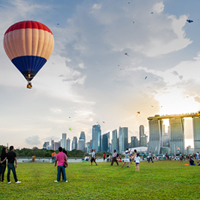Driving in Hiroshima
Summary: Driving in a new country can be daunting. These tips offer insight into what to expect when driving in Hiroshima.
1. Understanding the Driving Rules
Japan drives on the left side of the road, and the driver's seat is on the right side of the car. This might take some getting used to if you're from a country that drives on the right. The speed limits are generally lower than in many Western countries, with a maximum of 100 km/h on expressways, 60 km/h on urban roads, and 40 km/h on small side streets. Traffic rules are strictly enforced, and penalties for violations can be severe.
2. Getting a Driver's License
Foreigners can drive in Japan with an International Driving Permit (IDP) for a maximum of one year, even if the IDP is valid for a longer period. After a year, you will need to obtain a Japanese driver's license. To do this, you will need to pass a written test and a practical driving test. The process can be quite challenging, especially if you don't speak Japanese, so it's recommended to take a driving course or hire a translator.
3. Choosing the Right Car
Compact cars are recommended for driving in Hiroshima, as the streets can be narrow and parking spaces are often small. If you plan to travel outside the city, a car with a bit more power might be useful. Hybrid and electric cars are becoming more popular in Japan, and there are plenty of charging stations in Hiroshima.
4. Parking in Hiroshima
Finding parking in Hiroshima can be challenging, especially in the city center. Many people use public transportation or bicycles for daily commuting to avoid this issue. Parking lots are available but can be expensive, especially for long-term parking. Some apartment buildings offer parking for residents, but this is usually at an additional cost.
5. Navigating the City
While Hiroshima is not as crowded as Tokyo or Osaka, it can still be busy, especially during rush hour. GPS is highly recommended for navigating the city. Most rental cars come with GPS, and you can set it to English. Be aware that many streets in Hiroshima do not have names, so it's common to navigate by landmarks.
6. Be Prepared for Tolls
Many expressways in Japan are toll roads. The fees can add up quickly, especially on long trips. Electronic toll collection (ETC) cards are available and can make paying tolls more convenient. These can be rented with your car if you don't have one.
7. Respect for Pedestrians and Cyclists
Japan has a high number of pedestrians and cyclists, and drivers are expected to show them respect and caution. Always check for cyclists before turning, and be prepared to stop for pedestrians at crosswalks.
About the Author
 Joshua Wood, LPC joined Expat Exchange in 2000 and serves as one of its Co-Presidents. He is also one of the Founders of Digital Nomad Exchange. Prior to Expat Exchange, Joshua worked for NBC Cable (MSNBC and CNBC
Primetime). Joshua has a BA from Syracuse and a Master's in Clinical and Counseling Psychology from Fairleigh Dickinson University. Mr. Wood is also a licensed counselor and psychotherapist.
Joshua Wood, LPC joined Expat Exchange in 2000 and serves as one of its Co-Presidents. He is also one of the Founders of Digital Nomad Exchange. Prior to Expat Exchange, Joshua worked for NBC Cable (MSNBC and CNBC
Primetime). Joshua has a BA from Syracuse and a Master's in Clinical and Counseling Psychology from Fairleigh Dickinson University. Mr. Wood is also a licensed counselor and psychotherapist.
Some of Joshua's articles include Pros and Cons of Living in Portugal, 10 Best Places to Live in Ireland and Pros and Cons of Living in Uruguay. Connect with Joshua on LinkedIn.





